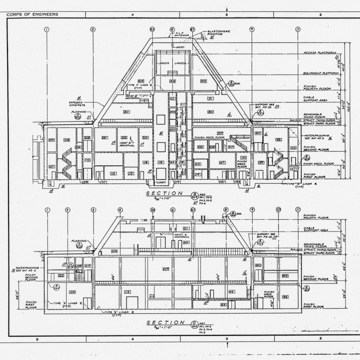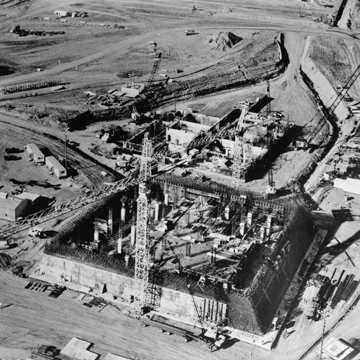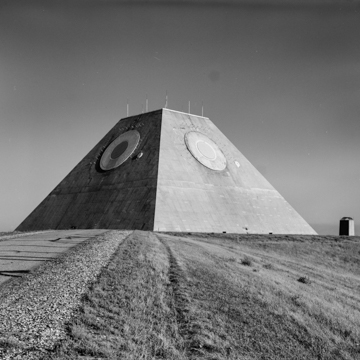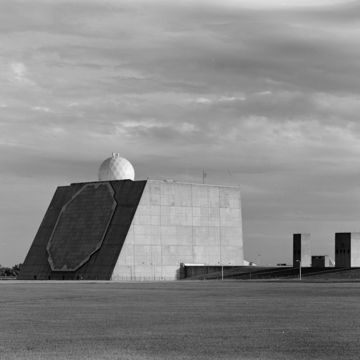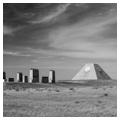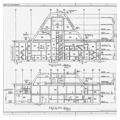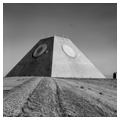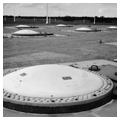Not far from the Canadian border sits what may be the ultimate monument to the Cold War. The Stanley R. Mickelson Safeguard Complex (SRMSC) was designed to protect the Minuteman missile fields at Grand Forks Air Force Base from the staggering prospect of a Soviet missile attack, or at least to protect it long enough for the Strategic Air Command to obtain a launch order from the president and retaliate with U.S. missiles. The SRMSC was the only installation of its kind in the nation and, unlike modern antiballistic missiles that use precise kinetic impact to destroy descending enemy warheads, this complex was designed to respond with available Cold War technology. In the 1970s that meant a thermonuclear explosion overhead to obliterate the incoming target. The Nekoma site was a massive complex of missile silos, a radar system, and dozens of launching silos for surface-to-air missiles tipped with thermonuclear warheads. Reportedly the antiballistic missile system, constructed over eight years for approximately six billion dollars, was operational for not more than three days. The Missile Site Radar (MSR) controlled the safeguard system from a pyramidal concrete structure several stories high. The complex was built by the U.S. Army Corps of Engineers, apropos the vision of Dr. Strangelove.
You are here
Nekoma Radar Installation
If SAH Archipedia has been useful to you, please consider supporting it.
SAH Archipedia tells the story of the United States through its buildings, landscapes, and cities. This freely available resource empowers the public with authoritative knowledge that deepens their understanding and appreciation of the built environment. But the Society of Architectural Historians, which created SAH Archipedia with University of Virginia Press, needs your support to maintain the high-caliber research, writing, photography, cartography, editing, design, and programming that make SAH Archipedia a trusted online resource available to all who value the history of place, heritage tourism, and learning.
















